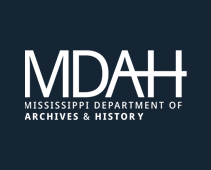Inventory of Historic Maps of Mississippi
by Paul Davis
| Title: | Public Lands Survey System Plats illustrated via the Bureau of Land Management - General Land Office Records web site. |
| Author: | Various Surveyors |
| Scale: | Varable |
| Situation Date: | ca 1803-1899 |
| Publication Date: | ca 1803-1899 |
| Type: | Originals |
| Features: | Topography, rivers, lakes, ponds, marshlands, prairies, boundaries, , churches, cemeteries, schools, quarries, roads, paths, railroads, names and parcels boundaries of local land owners/residents, township, section and subsection boundaries,townships and section acreage, geographic coordinates school lands, other natural and cultural features, land warrants and land records. |
| Comments: | General Notes: In order to best identify townships and sections in a given county see: http://sp.mdot.ms.gov/Office%20of%20Highways/Planning/Maps/County%20Highway%20Maps/Forms/AllItems.aspx
Survey plats, were the official survey documentation used when land title was transferred (via a land patent) from the Federal government to individuals. The survey plats are the graphic drawing of the boundaries created by each survey and contain the official acreage used in the legal description of the public lands. Plats are critical historic documents that can help researchers locate the land referenced in a land patent's legal land description (i.e. Geographic Meridian, Township, Range, and Section/Block). Surveying is the art of measuring and locating lines, angles, and elevations on the curved surface fo the earth. A survey results from a team of surveyors applying their art to create, mark, and define the boundaries of a given tract of land. While they are surveying, the surveyors make field notes which are a chronological description of the actions the surveyors took and the measurements they performed. Older notes may also contain certain environmental observations like soil and vegetation conditions, and the names of settlers on adjacent lands. The end result of all the surveying and note taking is a plat, which is a carefully drawn "map" of the survey results. The surveyors base the plat drawing almost entirely on the field notes they recorded during the survey. The plat is the official, approved documentation of the survey. For an in depth discussion of plat map development see: http://www.glorecords.blm.gov/Visitors/OverviewSurveysPlatsAndFieldNotes.asp Features Note: Not all survey plats contain all noted features. Surveyor notes are attached to some township images available via the GLO link provided. Type Note: For a description of the 18 various kinds of surveys see: http://www.glorecords.blm.gov/Visitors/SurveyTypes.asp Link Note: The link noted provides access to plats and land records. Important: In order to best identify townships in a given county see: http://copiah.msgenweb.org/Resources/Maps/MsLandPlot.gif Size Note: Original plats varied in size. Images provided via the GLO site are high resolution to enable visibility of small details. Color Note: Not all maps are in color. |
| Coverage: | Approximately 1,400 township maps are available for Mississippi counties: Adams, Alcorn, Amite, Attala, Benton, Bolivar, Calhoun, Carroll, Chickasaw, Choctaw, Claiborne, Clarke, Clay, Coahoma, Copiah, Covington, DeSoto, Forrest, Franklin, George, Greene, Grenada, Hancock, Harrison, Hinds, Holmes, Humphreys, Issaquena, Itawamba, Jackson, Jasper, Jefferson, Jefferson Davis, Jones, Kemper, Lafayette, Lamar, Lauderdale, Lawrence, Leake, Lee, Leflore, Lincoln, Lowndes, Madison, Marion, Marshall, Monroe, Montgomery, Neshoba, Newton, Noxubee, Oktibbeha, Panola, Pearl River, Perry, Pike, Pontotoc, Prentiss, Quitman, Rankin, Scott, Sharkey, Simpson, Smith, Stone, Sunflower, Tallahatchie, Tate, Tippah, Tishomingo, Tunica, Union, Walthall, Warren, Washington, Wayne, Webster, Wilkinson, Winston, Yalobusha and Yazoo. |
| Repository: | Bureau of Land Management/General Land Office |
| Language: | English |
| Size (inches): | Variable |
| Color: | Y |
| Link: | http://www.glorecords.blm.gov/ |
